November 2022
November 5, 2022
Hair length and voting
In 1969, the Wyoming Senate approved an amendment to lower the voting age to 19, but added the condition that young men would only be able to vote if they had short hair conforming to military standards. No similar condition was imposed on young women.
Billings Gazette - Feb 8, 1969
Some more details from "Let us vote!": youth voting rights and the 26th amendment by Jennifer Frost:
Although Myers's amendment may have started as a joke, the Wyoming Senate initially passed it before finally removing it. "Young people in Wyoming were not laughing. They were embarrassed. They were shocked," wrote Philip White, the editor of the Branding Iron, the student newspaper at the University of Wyoming. Making appearance a qualification for suffrage was unconstitutional, and Myers knew it. Neither hair, clothing, nor skin color could be taken into consideration for determining voting rights, White explained. Young people wanted the vote. "But we will not stand to be judged by the length of our hair." In the end the controversy subsided, and the Vote 19 referendum would go before the state's electorate in November 1970.
Posted By: Alex - Sat Nov 05, 2022 -
Comments (0)
Category: Government, Civic Duties, 1960s, Hair and Hairstyling
The College Stripper Riot of 1955
The history of monkey-wrenching university protocols did not begin in the 1960s.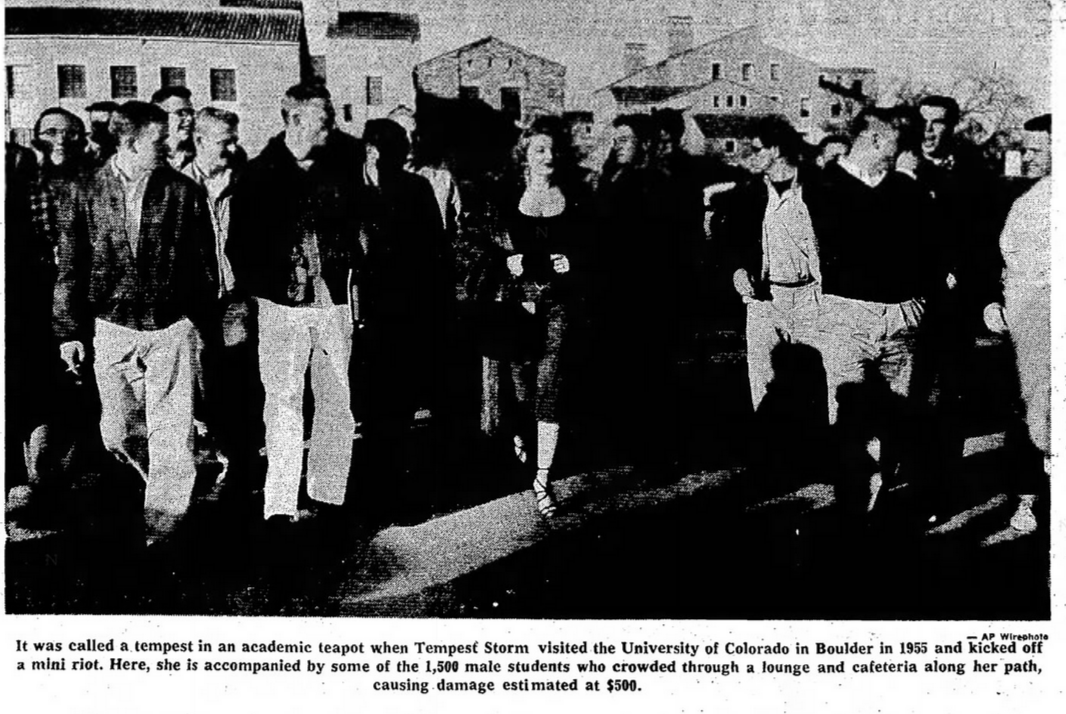
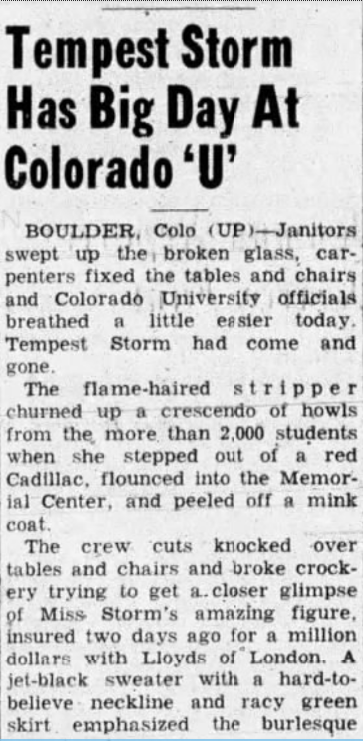
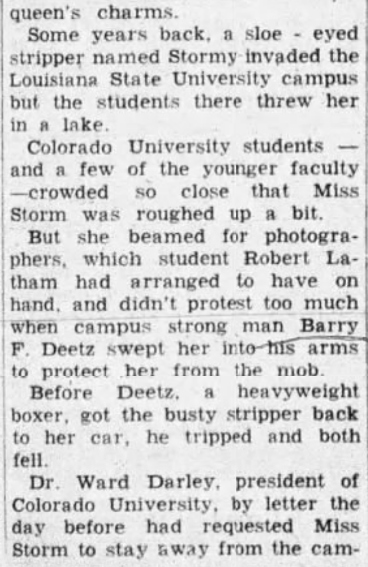
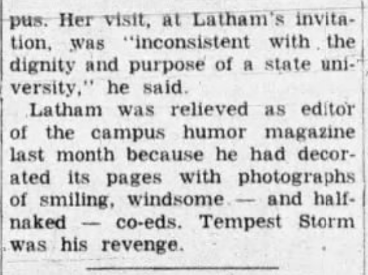
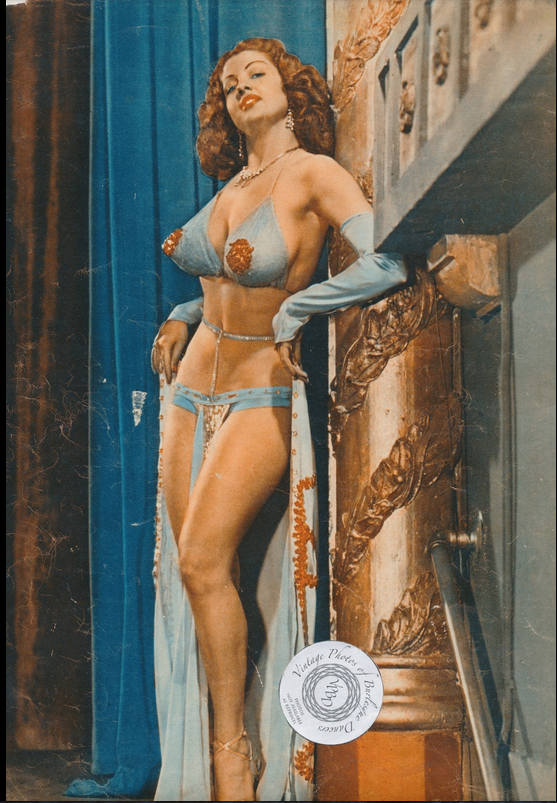
Posted By: Paul - Sat Nov 05, 2022 -
Comments (0)
Category: Education, Riots, Protests and Civil Disobedience, Burlesque, Exotic Dancing, Stripping and Other Forms of Staged Nakedness, 1950s, Pranks
November 4, 2022
Infinite Conversation
infiniteconversation.com
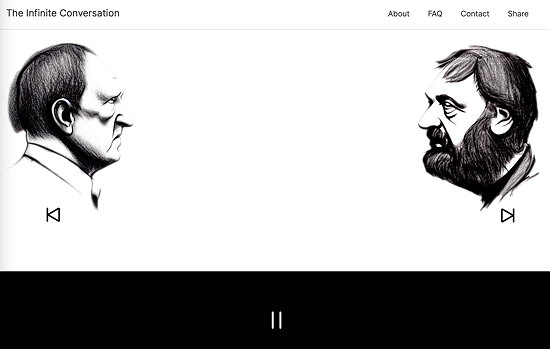
Posted By: Alex - Fri Nov 04, 2022 -
Comments (2)
Category: Philosophy, Strange Websites
The Orukter Amphibolos
We've seen many amphibious vehicles at WU, but mostly from the 20th century. Here's one of the earliest, from 1804.Wikipedia page of the inventor, Oliver Evans.
Posted By: Paul - Fri Nov 04, 2022 -
Comments (1)
Category: Inventions, Motor Vehicles, Oceans and Maritime Pursuits, Nineteenth Century
November 3, 2022
The Acoustics of Miniskirts
October 1969: UCLA Professor Vern O. Knudsen assembled ten young women wearing miniskirts in a reverberation chamber and fired a blank cartridge from a pistol. He did this to prove his hypothesis that bare legs revealed by a miniskirt will reflect more sound than legs covered by a long skirt.His hypothesis confirmed, he warned that miniskirt wearers might disturb the carefully engineered balance of sound in concert halls by reflecting more sound. He noted: "We must be acoustically thankful that they don't wear bikinis."
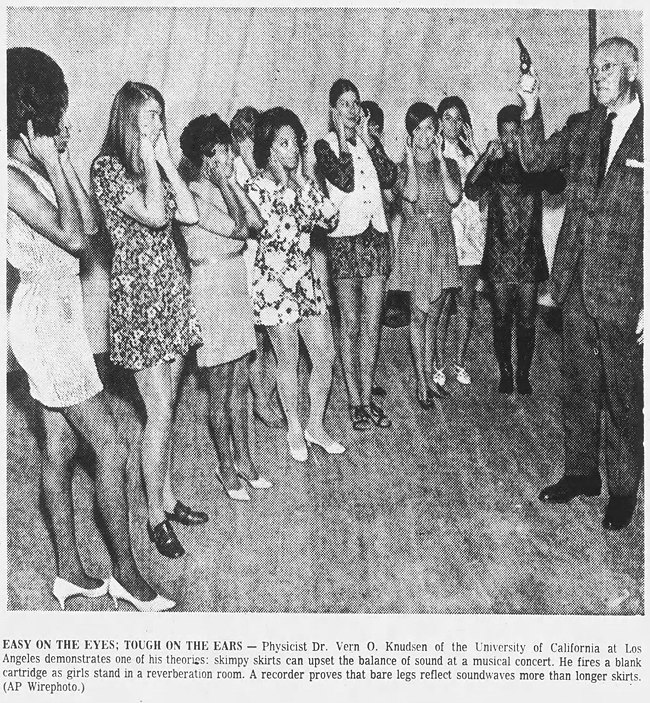
Rock Island Argus - Oct 29, 1969
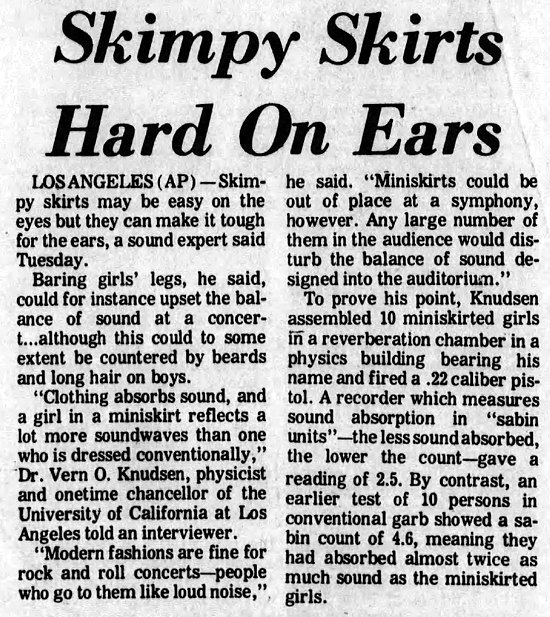
Orangeburg Times and Democrat - Oct 29, 1969
Oddly enough, this wasn't the first time a scientist had warned of the acoustic danger of short skirts. Back in 1929, Colgate University Professor Donald A. Laird had issued a very similar warning: "He quoted scientific reports to prove that shortening of women's skirts has added to noise by removing some sound deadening surface."
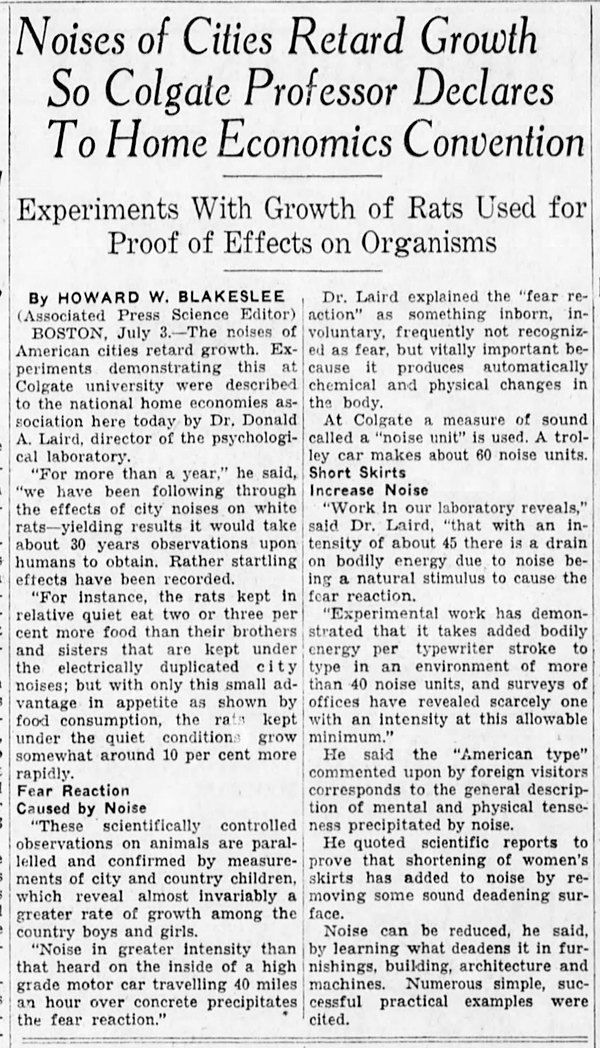
San Bernardino County Sun - July 4, 1929
Related posts: Miniskirts for road safety, Nun in a miniskirt
Posted By: Alex - Thu Nov 03, 2022 -
Comments (3)
Category: Fashion, Science, Experiments, 1960s, Cacophony, Dissonance, White Noise and Other Sonic Assaults
The Trampoline Performance Art of Yoann Bourgeois
His Wikipedia page.
Posted By: Paul - Thu Nov 03, 2022 -
Comments (2)
Category: Daredevils, Stuntpeople and Thrillseekers, Music, Clumsiness and Grace, Performance Art, Gymnastics
November 2, 2022
Alternative Flight Simulator
Gadget-maker Alex Shakespeare has built an "alternative flight simulator, from a passenger's perspective." This allows him to pretend he's flying on a plane, without actually being on one.He needs to put a row of seats a few inches in front of him to create the full, no-legroom effect.
More info: Alex Shakespeare's website
Posted By: Alex - Wed Nov 02, 2022 -
Comments (2)
Category: Technology, Air Travel and Airlines
Unlikely Reasons for Murder No. 11
In 1952, a schizophrenic with an eccentric theory of physics murdered a random person.“Have they dropped the electronic theory?” he asked her.
“I don’t know anything about it,” she replied.
Before she could say more, he fired the gun at her.
“I just wanted to kill somebody,” he told police. “I was going to shoot anybody. It was my book. They wouldn't look at my book. They wouldn't even look at it."
Peakes had done the calculus: Shooting people gets you in the papers. And if you shoot physicists because they rejected your theory, your theory gets in the papers.
Full account here.
The initial coverage below.
Article source: The South Bend Tribune (South Bend, Indiana) 15 Jul 1952, Tue Page 1
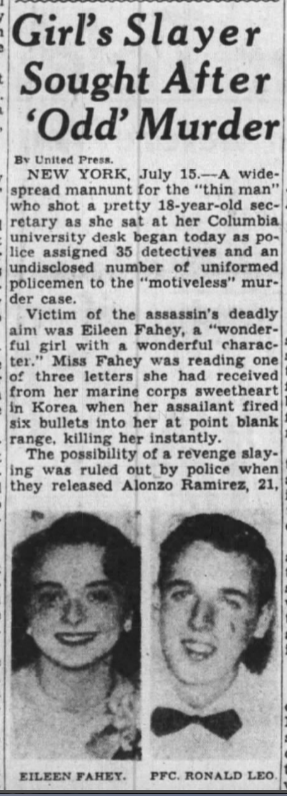
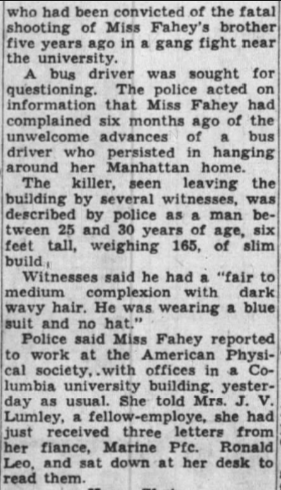
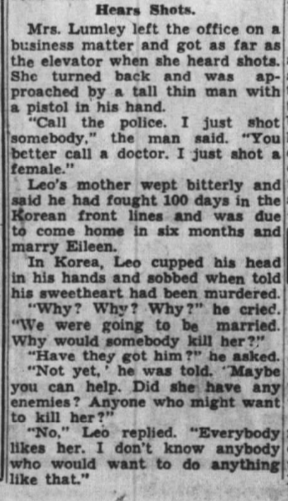
Posted By: Paul - Wed Nov 02, 2022 -
Comments (0)
Category: Death, Science, Scary Criminals, 1950s, Mental Health and Insanity
November 1, 2022
Sun Ra Cover Art Book
Looks like a great Xmas present for WU-vies.Here's the publisher's page, with the Amazon link below.
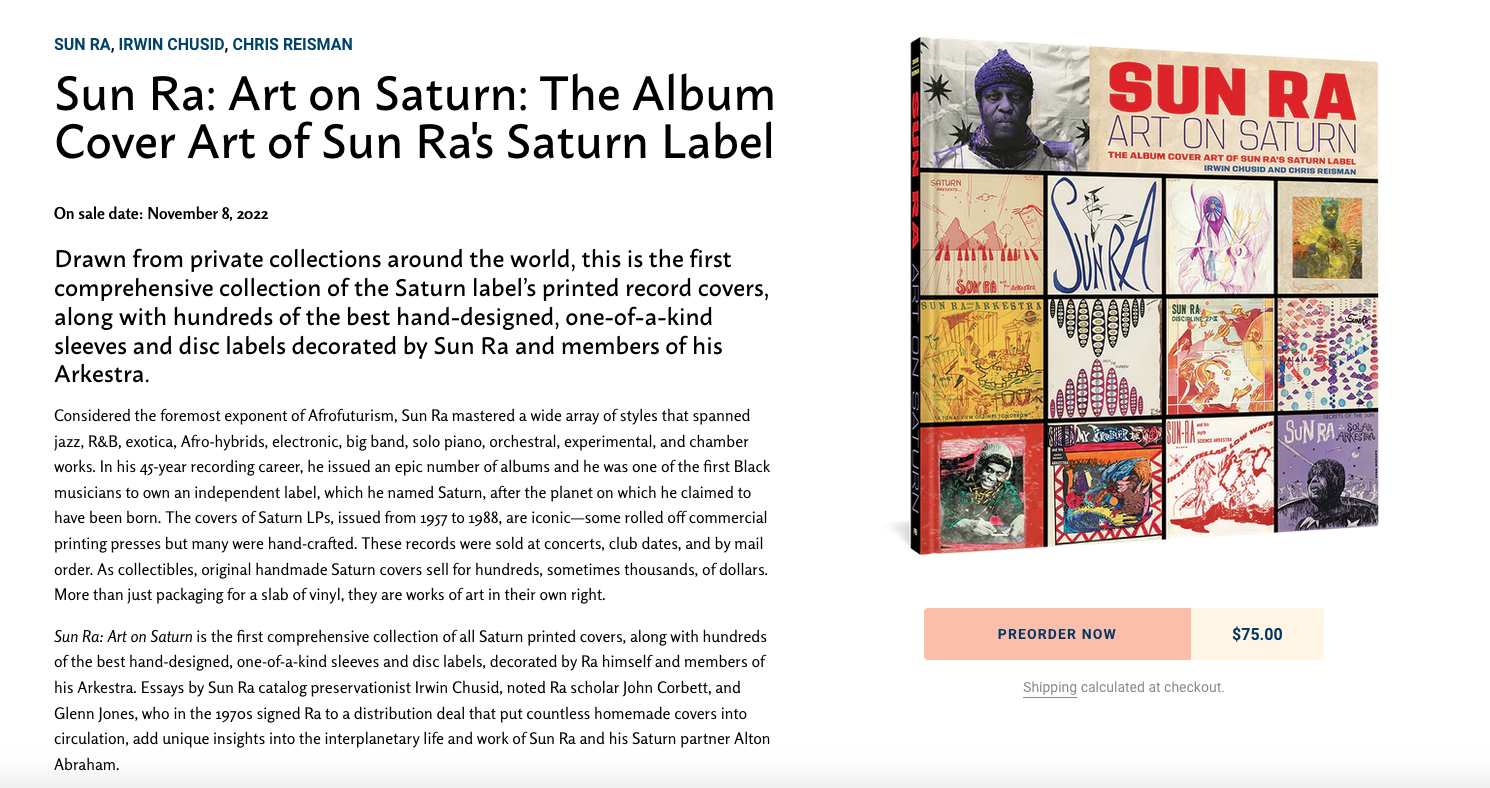
Posted By: Paul - Tue Nov 01, 2022 -
Comments (0)
Category: Art, Eccentrics, Holidays, Music, Vinyl Albums and Other Media Recordings, Books
The right to wear a bikini while mowing the lawn
May 1966: The charges of indecent exposure, brought against 21-year-old Mary Lou Hood for mowing her lawn while wearing a bikini, were all dropped. The judge determined there was insufficient evidence of lewdness or indecent exposure to support the charges.The case was said to be the hottest issue in the college town of Edmond, Ohlahoma "since canned beer." The judge delivered his decision to a standing-room-only crowd. The case also received widespread national media coverage even though, as Hood's lawyer noted, the case didn't actually establish a legal precedent for a right to wear a bikini while mowing the lawn.
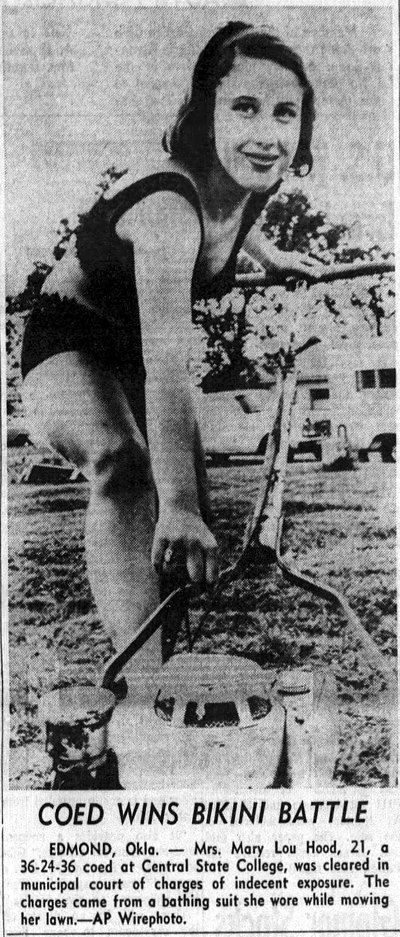
Muncie Evening Press - May 20, 1966
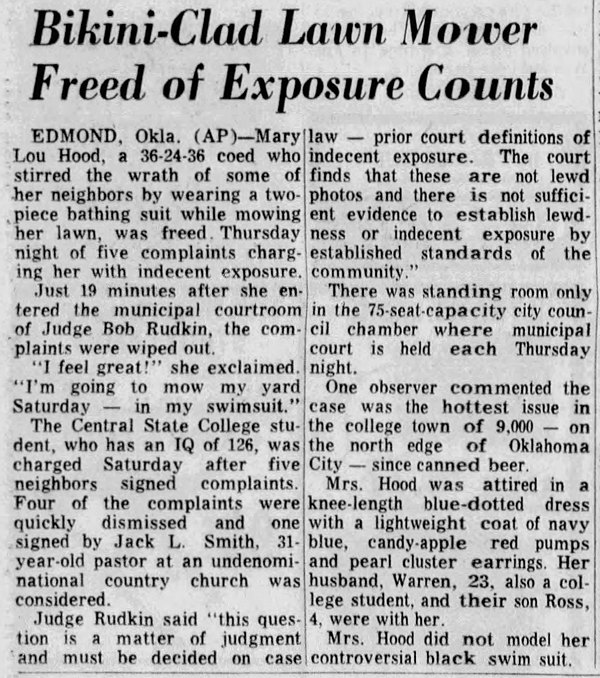
Spokesman Review - May 20, 1966
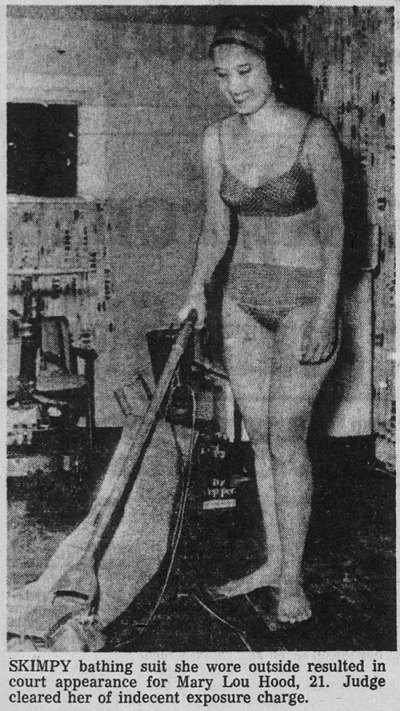
Ogden Standard Examiner - May 20, 1966
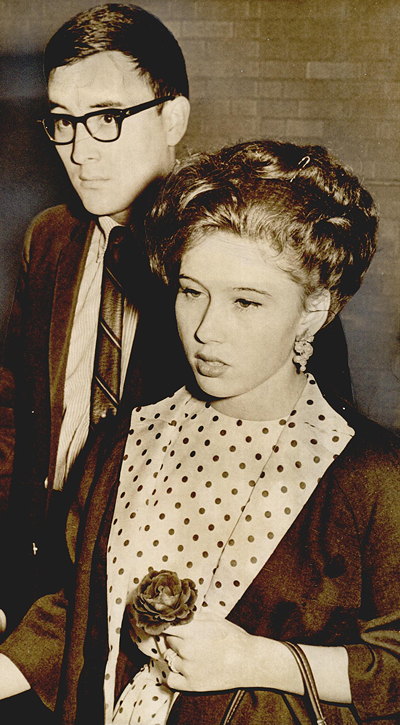
Mary Lou Hood, with her husband, at the courthouse
May 20, 1966. Source.
Posted By: Alex - Tue Nov 01, 2022 -
Comments (9)
Category: Fashion, Law, 1960s
| Get WU Posts by Email | |
|---|---|

| Who We Are |
|---|
| Alex Boese Alex is the creator and curator of the Museum of Hoaxes. He's also the author of various weird, non-fiction books such as Elephants on Acid. Paul Di Filippo Paul has been paid to put weird ideas into fictional form for over thirty years, in his career as a noted science fiction writer. He has recently begun blogging on many curious topics with three fellow writers at The Inferior 4+1. Chuck Shepherd Chuck is the purveyor of News of the Weird, the syndicated column which for decades has set the gold-standard for reporting on oddities and the bizarre. Our banner was drawn by the legendary underground cartoonist Rick Altergott. Contact Us |

